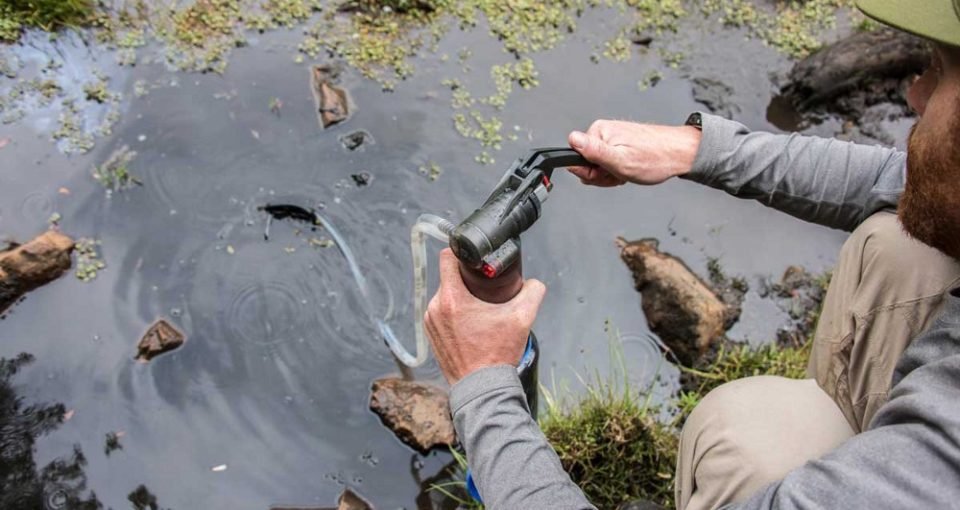U.S. Army Fund Leading Water Purifier Research
Will Ross, March 20, 2017

You know you’re a serious outdoors brand when the U.S. Army come to you with an enviable request to design a portable device that can remove viruses, bacteria and protozoa from untreated water supplies. Despite the vast technical advancements in apparel and hardware that have enabled servicemen and everyday adventurers to extend their ambitions to colder, harder terrain in recent years, supply of clean drinking water still places a very real threshold on the length of a trip. For Pacific Northwest brand MSR, now 30-years-old and very comfortable with being one the most enduring manufacturers of tents and stoves, purifying water has been a novel area of focus in recent years.
The research and development for the U.S. Army involved a five-year project (extended from a projected 3-year runway) to come up with a handheld water purifier that doesn’t rely on an batteries, UV bulbs or chemicals, resulting in the impressive Guardian Purifier solution. This work essentially had MSR testing medical-grade fibre in their on-site Grade 2 biological lab, to see if it would block the tiniest waterborne microbiological threats. Whereas conventional hollow fibres only prevent protozoa and sediment from making it through the 0.2 Micron membrane, MSR’s filter works to a degree of 0.02 Micron, the type used in kidney dialysis.
Thanks to this outstandingly diligent membrane, the new Guardian Purifier mechanically pulls out viruses (Norwalk, Rotavirus, Hepatitis A), bacteria (E Colli, Salmonella, Cholera) and protozoa (Giardia, amoebae, Cryptosporidium) during the filtration process.
You would think this major advancement would mean the Guardian would have an incredibly slow pumping speed, when in fact it’s pretty swift – 2.5 litres per minute. A competitive product from Sawyer is equally stringent in its extraction, using gravity instead of a pump-assisted purifier, but their 2.5-litre volume takes 15 minutes to fill.
Despite the precision of the Guardian Purifier, it makes no sacrifice in durability. Pumps have been tested thoroughly, showing them capable of extracting 10,000 litres of water with no sign of reduced quality. This exceptional lifespan is partly thanks to a self-clean process: on every stroke, the purifier uses 10% of its uptake to flush contaminants off the membrane and back into the source. This removes the hassle of having to scrub cartridges to maintain a fast flow, and prevents back flushing through the primary uptake.
Beyond the core cleaning function of the Guardian Purifier, it also withstands freezing and can survive a 6ft drop onto concrete. No assembly is needed before using the device – simply load it onto the 63mm flange of your favourite Nalgene, and wrap the uptake tubes around the device for a packable unit that can be stuffed into a pack (it has been tested to 300 pounds of crushing force). Spare parts can be bought separately, providing added confidence to a $349 purchase.
For something that comes in around the size of a 1-litre cola bottle, the Guardian Purifier solves a fundamental problem for human survival. Though it only addresses immediate threats and not the long-term problems of contamination by petroleum or metals, carrying off microbiological products at a price that’s not unrealistic for the ambitious consumer is a mighty achievement. Its use for the military will be primarily for troops in disaster relief zones, with studious adventurers now able to extend a rangy weekend loop well beyond Monday.
Do you have a killer water purifier? How often do you use it? We’re looking for water nerds – email will@zafiri.com if you are advanced. [Photo: Scott Rinckenberger.]